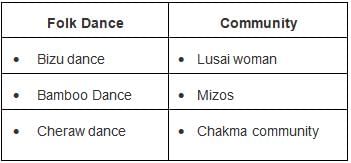Test: History - 13 - UPSC MCQ
25 Questions MCQ Test - Test: History - 13
During the Mughal period of Indian history, the term Parwana refer to
Consider the following statements regarding Carnatic Wars.
- The First Carnatic War (1744-48) was triggered by the War of the Austrian Succession.
- Under the treaty of Aix-la-Chapelle, Madras was restored to the French.
- The battle of Wandiwash ended the French threat to British in India.
Which of the above statements is/are correct?
| 1 Crore+ students have signed up on EduRev. Have you? Download the App |
As a result of the Battle of Plassey
- The British started wielding influence over the Bengal Nawabs and consequently acquired significant concessions for revenue from trade.
- It resulted in the East India Company (EIC) gaining greater military might which allowed them to push other European colonial powers away from Bengal.
Select the correct answer code:
Which of the following battle ended with the Treaty of Allahabad?
Consider the following statements regarding Ryotwari System.
- It was introduced by Robert Clive.
- Major areas of introduction include Madras, Bombay, parts of Assam and Coorg provinces of British India.
- The ownership rights were handed over to the peasants.
Which of the above statements is/are correct?
Consider the following statements regarding Tholpavakkoothu.
- Tholpavakkoothu also called as shadow puppetry, is a traditional temple art in Kerala.
- It narrates the tales from the Ramayana.
- Speciality of Tholpavakkoothu is the complete absence of any instruments in the performance.
- Which of the above statements is/are correct?
Consider the following statements regarding Kalarippayattu.
- Kalaripayattu is a Martial art which originated as a style in Kerala during 3nd century BC.
- The word kalari appears in Sangam literature.
- Kalaripayattu techniques include a combination of Chuvatu and Vadivu.
Which of the above statements is/are correct?
Consider the following pairs of folk dances with the associated community

Which of the above pairs are correctly matched?
Which of the above pairs are correctly matched?

Which of the above pairs are correctly matched?
Consider the following pairs

Which of the above pairs is/are incorrectly matched?
Consider the following statements regarding Treaty of Salbai.
- Treaty of Salbai was signed between the Marathas and the British East India Company.
- Raghunath Rao was freed and a pension was fixed for him.
- British East India Company got the control of the Salsette.
Which of the above statements is/are correct?
Consider the following statements regarding The Indian Factory Act, 1881.
- The Indian Factory Act, 1881 dealt primarily with the problem of child labour.
- It ruled that no children below the age of 14 years could be employed in a factory.
Which of the above statements is/are correct?
Which of the following factors was/were responsible for impoverishment of Indian agriculture in British times?
- Land revenue system
- Administrative and judicial system of British
- Ruin of handicrafts industries
Select the correct answer code:
Consider the following statements regarding Pitt’s India Act of 1784.
- Pitt’s India Act was also known as the Act of Settlement.
- It established a system of double government.
- British Government was given the supreme control over Company’s affairs and its administration in India.
Which of the above statements is/are correct?
Consider the following statements regarding Deccan Riots.
- The main motive of riots was to destroy the account books of the moneylender.
- Deccan Agriculturists Relief Act was passed which ensured that the farmers could not be arrested and imprisoned if they were unable to pay their debts.
- The movement was highly criticised by Poona Sarvajanik Sabha.
Which of the above statements is/are correct?
The Ilbert Bill Controversy is said to be a high watermark in the history of Indian National Movement. This is because it invoked issues of
- Racial discrimination between Indian and Europeans.
- Suppression of Indian media houses and their nationalization by the Government.
- Security lapse on the Indian borders, especially the North-Western frontier.
Select the correct answer code:
Which of the following were the main objectives of the Khilafat movement?
- To rouse anti-British feelings among the Muslims of India.
- To demand separate electorates and preserve the Khilafat
- To save the Ottoman empire and preserve the Khilafat.
Select the correct answer code:
During Salt Disobedience, after Gandhi’s arrest, the Congress Working Committee sanctioned:
- Payment of revenue only in ryotwari areas.
- No-chowkidara-tax campaign in zamindari areas
- Violation of forest laws in the Central Provinces
Which of the above statements is/are correct?
Consider the following statements regarding the composition of Constituent assembly.
- The Constituent Assembly was constituted in November 1946 under the scheme formulated by the August offer.
- Constituent Assembly was a partly elected and partly nominated body.
- Seats were allotted on the basis of population at that time.
Which of the above statements is/are correct?
Which of the following regions were integrated by referendum in India?
- Nagaland
- Sikkim
- Junagarh
- Hyderabad
Select the correct answer code:
Consider the following statements regarding India’s political status post-independence.
- From August 15, 1947 to January 26, 1950, India’s political status was that of a dependency in the British Commonwealth of Nations.
- India ceased to be a British dominion on January 26, 1950, by declaring herself a sovereign republic.
Which of the above statements is/are incorrect?
The Delhi Agreement of 1952 is remarkable in Modern Indian History because

















